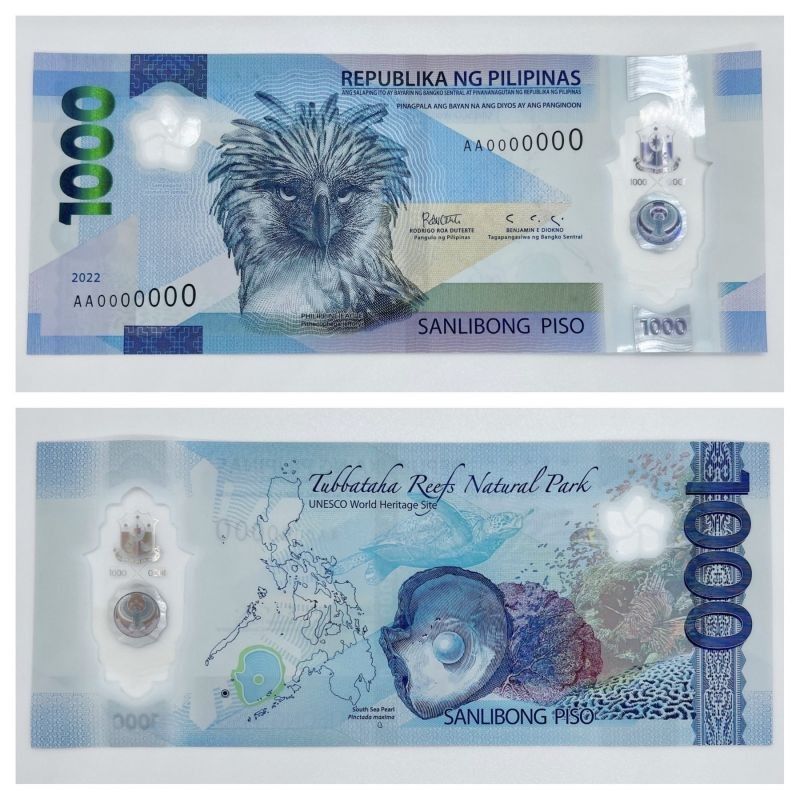BSP to replace heroes on P1,000 bill with Philippine eagle

MANILA, Philippines (Updated 4:52 p.m.) — Say goodbye to World War II heroes Josefa Llanes Escoda, Vicente Lim and Jose Abad Santos as their faces will be removed by the Bangko Sentral ng Pilipinas from the P1,000 banknote and replaced by a Philippine eagle.
BSP Governor Benjamin Diokno shared to reporters on Saturday the new design of the P1,000 bill, which will be made from water and dirt-resistant polymer and rolled out by the fourth week of April 2022.
“The new series will focus on fauna and flora in the Philippines,” Diokno said when asked why the heroes in the banknotes were replaced in the banknotes’ new look.
Diokno said the BSP came up with the new design, which was approved by the National Historical Commission of the Philippines. He added that its issuance has been approved by the BSP’s Monetary Board and the Office of the President.
But not everyone is happy with the new design, with Rep. Carlos Zarate (Bayan Muna party-list) pointing out "glaring errors" in the new banknote, including a misspelling of the Philippine eagle's scientific name.
"The BSP made almost the same mistake in 2010, thus, it is lamentable that the same istake is repeated. We trust that prior to the printing of the new notes, these mistakes will be corrected, so as not to waste funds or resources," Zarate said.
The issuance of new polymer P1,000 bills is part of the BSP’s push to shift to the material instead of cotton and abaca. Polymer, the BSP said, is more hygienic, sustainable, durable and cost-effective.
The polymer bills will also be water and dirt resistant, making them more suitable for wet markets.
The BSP announced in October that it has been authorized to circulate 500 million pieces of P1,000 polymer banknotes as part of a test for its adoption.
The new polymer banknotes will be produced by the Reserve Bank of Australia and its wholly-owned subsidiary Note Printing Australia. — Xave Gregorio
- Latest
- Trending































